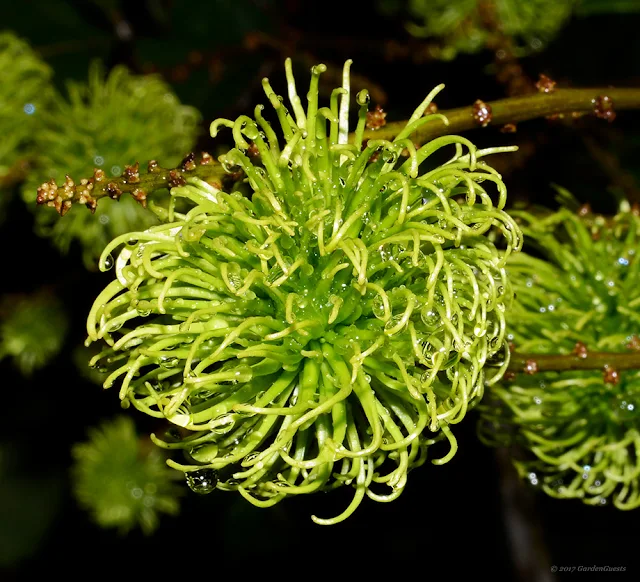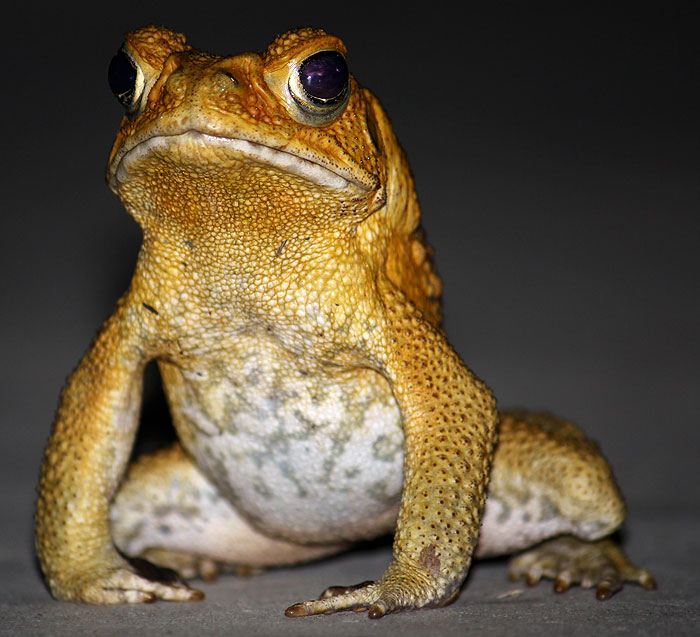Boyd's Forest Dragon
The Boyd's Forest Dragon Hypsilurus boydii formerly (Gonocephalus) is a true rain forest specialist. In fact it is one of the few reptiles that regulates its body temperature by thermoconforming (using the ambient temperature of the air and surfaces it rests on, rather than by direct exposure to the sun). This makes sense as closed canopy rain forests, by definition, have limited amounts of direct sunlight available - especially at ground level.
That's not to say the lizard is terrestrial. They are usually found resting on the sides of trees - very often small saplings. And it's sometimes surprising just how well they blend into their environment, on more than one occasion I have watched groups of people wander past them in blissful ignorance.
Reportedly, these beautiful dragons attain a T/L of around 500mm. However, these would be large males, with the females being considerably smaller and less, well, chunky ...lol.
Estimates on the longevity of this lizard vary wildly. From those who suggest a life span of between 5-10yrs to those who claim they may live for 60yrs!. It's probably safer to assume we don't have enough data to say with any certainty eh?.
For locals, and visitors alike - this next bird requires no introduction. It's basically the icon of the wet tropics (no pressure then ...). I really need to do a post solely dedicated to these remarkable creatures. They're lovely animals, and when treated with the respect they deserve, do not pose any significant risk to you.
As always, it isn't just the 'magnificent' or the iconic that capture my attention. The little things that are so often overlooked are, at least in my opinion - just as noteworthy. And I'd like to say that I know what species this grasshopper is - but I'd be lying. My friend David at Bunyipco probably has some idea ... I really oughta ask the man.
I can at least let you know that our next grasshopper has an I.D - it's a long-faced or vegetable grasshopper Atractomorpha similis. It gets the name vegetable grasshopper as it is sometimes a 'pest' in the garden - (Jo say's pretty much the same thing about me). Us pests have to stick together ...
And now for something completely different. Fruit. Yes, you read that right - fruit. This is a Rambutan (or hairy lycheee), a tropical fruit and one that goes perfectly with vodka - when ripe it'll be the most glorious red. I spied it as I was wandering around looking for insects, and I thought, Hey that looks fairly interesting all covered in rain drops (I then thought about a Rambutan cocktail and got all distracted and such)
We started with a Dragon, so it seems only fitting to end with one too. As you know, I'm a massive dragonfly fan. So much so that Jo got me an authoritative book on the subject: Theischinger, G., and John Hawking. The Complete Field Guide to Dragonflies of Australia. Collingwood, Vic.: CSIRO, 2006.. And while this may be a sub-species, I think the I.D of Painted Grasshawk Neurothemis stigmatizans is about right.
It's an amazing book. Thanks Jo :)
That's not to say the lizard is terrestrial. They are usually found resting on the sides of trees - very often small saplings. And it's sometimes surprising just how well they blend into their environment, on more than one occasion I have watched groups of people wander past them in blissful ignorance.
 |
Boyd's forest dragon (Lophosaurus boydii) |
Reportedly, these beautiful dragons attain a T/L of around 500mm. However, these would be large males, with the females being considerably smaller and less, well, chunky ...lol.
 |
Alert, but still |
 |
Fairly easy to see why it's in the Dragon family |
Estimates on the longevity of this lizard vary wildly. From those who suggest a life span of between 5-10yrs to those who claim they may live for 60yrs!. It's probably safer to assume we don't have enough data to say with any certainty eh?.
 |
Watching me - watching you ... |
 |
With dewlap on display |
 |
Love the hues |
For locals, and visitors alike - this next bird requires no introduction. It's basically the icon of the wet tropics (no pressure then ...). I really need to do a post solely dedicated to these remarkable creatures. They're lovely animals, and when treated with the respect they deserve, do not pose any significant risk to you.
 |
Southern cassowary (Casuarius casuarius) |
The southern cassowary (Casuarius casuarius) also known as double-wattled cassowary, Australian cassowary or two-wattled cassowary, is a large flightless bird.
It is a ratite (a diverse group of large, flightless birds of the infraclass Palaeognathae), and are therefore related to emu, ostrich, Rhea and are closely related to the kiwis, both families diverging from a common ancestor approximately 40 million years ago.
As always, it isn't just the 'magnificent' or the iconic that capture my attention. The little things that are so often overlooked are, at least in my opinion - just as noteworthy. And I'd like to say that I know what species this grasshopper is - but I'd be lying. My friend David at Bunyipco probably has some idea ... I really oughta ask the man.
 |
Nymph |
I can at least let you know that our next grasshopper has an I.D - it's a long-faced or vegetable grasshopper Atractomorpha similis. It gets the name vegetable grasshopper as it is sometimes a 'pest' in the garden - (Jo say's pretty much the same thing about me). Us pests have to stick together ...
 |
Long-faced or Vegetable grasshopper |
And now for something completely different. Fruit. Yes, you read that right - fruit. This is a Rambutan (or hairy lycheee), a tropical fruit and one that goes perfectly with vodka - when ripe it'll be the most glorious red. I spied it as I was wandering around looking for insects, and I thought, Hey that looks fairly interesting all covered in rain drops (I then thought about a Rambutan cocktail and got all distracted and such)
 |
Awesome with vodka |
We started with a Dragon, so it seems only fitting to end with one too. As you know, I'm a massive dragonfly fan. So much so that Jo got me an authoritative book on the subject: Theischinger, G., and John Hawking. The Complete Field Guide to Dragonflies of Australia. Collingwood, Vic.: CSIRO, 2006.. And while this may be a sub-species, I think the I.D of Painted Grasshawk Neurothemis stigmatizans is about right.
It's an amazing book. Thanks Jo :)
 |
Painted Grasshawk (Neurothemis stigmatizans) |
The Boyd's Forest Dragon is restricted to rainforests and their margins in Northern Queensland, Australia - from just north of Townsville to near Cooktown.
According to the IUCN: "This taxon (Hypsilurus boydii) has not yet been assessed for the IUCN Red List, and also is not in the Catalogue of Life".
Who knows what the fate of this remarkable species will be?
Take care
Who knows what the fate of this remarkable species will be?
Take care






Comments
Post a Comment